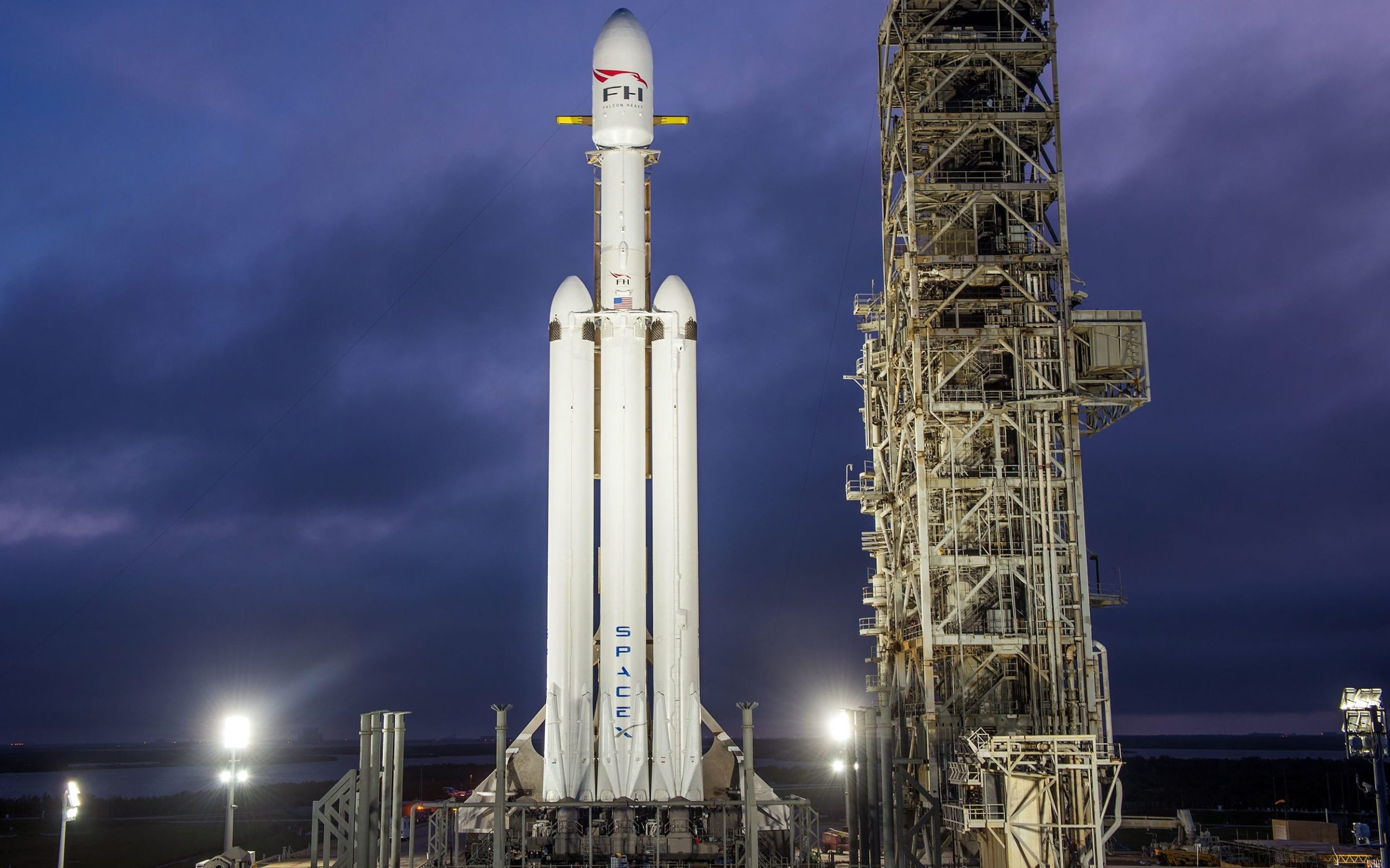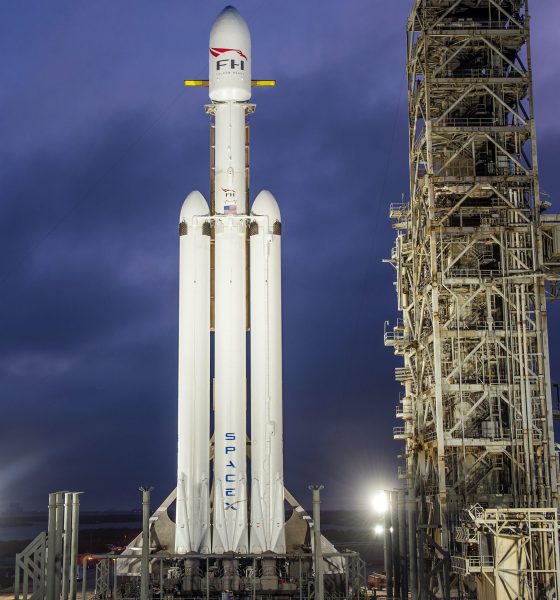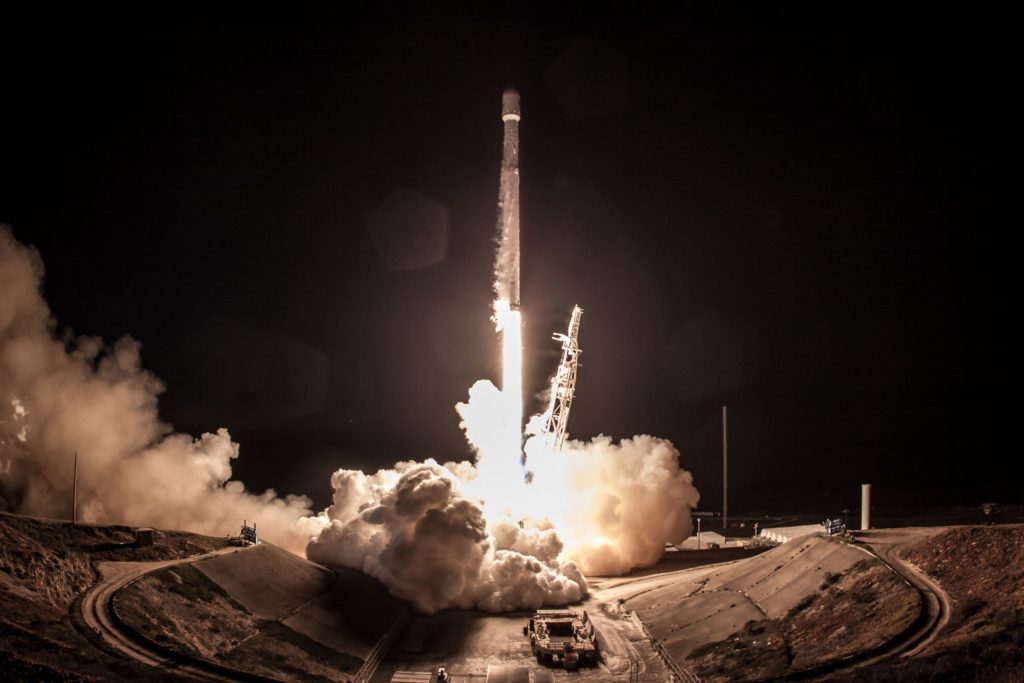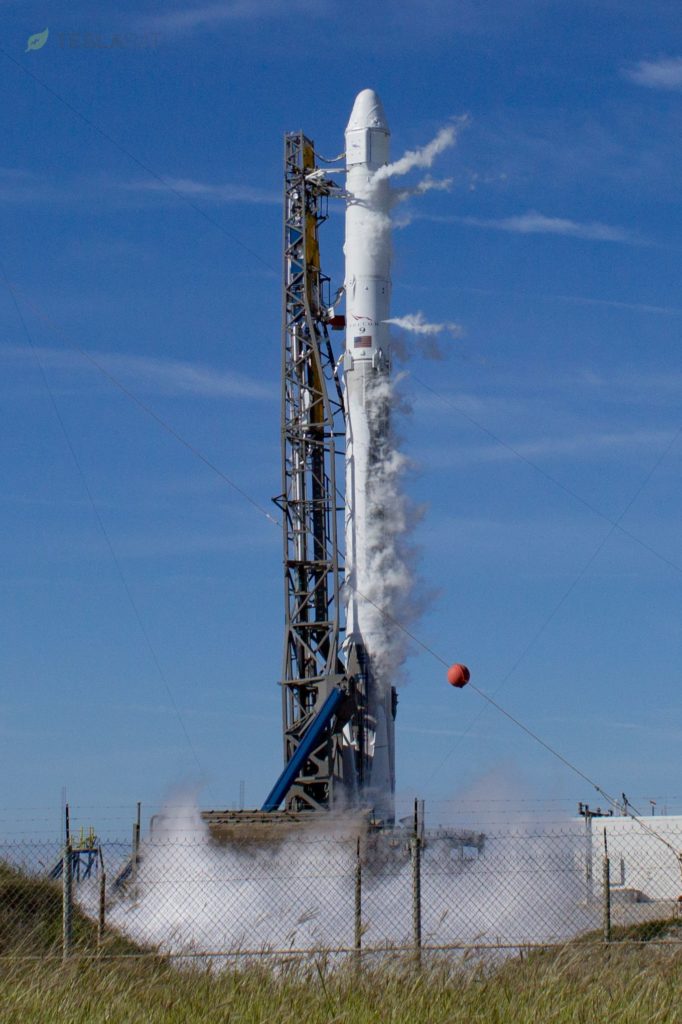

News
SpaceX Falcon Heavy testing delayed after government shutdown
As the U.S. Senate’s majority party searches for ten additional votes in order to end a federal government shutdown that began late Saturday, all “non-essential” activities at the country’s numerous government-operated space launch facilities have ground to an immediate halt and will remain in limbo until a funding bill compromise is hammered out.
While SpaceX is a wholly private space launch company, it relies almost unilaterally upon launch support and range expertise provided by NASA and the US Air Force, both in Cape Canaveral, FL and Vandenberg, CA. Sadly, the Air Force personnel SpaceX depend upon to conduct launches, static fires, and other ignition tests at its launch pads are not considered “essential” under regulations that prevent the federal government from coming to a complete halt in the event of a funding-related shutdown.
Unfortunately, a budget agreement wasn't reached, resulting in a gov't shutdown. This will unfortunately disrupt the lives and operations here at Patrick AFB. Go to https://t.co/yvmNBH1LMy for info on the current shutdown, impact on base resources, & financial resource options.
— Space Launch Delta 45 (@SLDelta45) January 20, 2018
SpaceX did appear to complete the most thorough round of Falcon Heavy testing yet late Saturday evening, the US Senate’s failure to either pass a continuing resolution or a new funding bill for the fiscal year led to a complete federal government shutdown soon after. As a result, nearly all of the US Air Force’s 45th Space Wing – a crucial backbone of East coast range and launch operations – was furloughed indefinitely, pending new funding from Congress. SpaceX had previously requested a new static fire date for Falcon Heavy on Monday, January 22 (today), a date that is now clearly going to move right for at least as long as the government lacks funding for basic launch operations.
Thankfully, activities like the extensive propellant loading tests that occurred on Saturday night do not technically require range support, so long as no engine ignition or static fire components are included. In the event of a catastrophic failure, the government-run range would be tasked with ensuring the safety of those in the vicinity and coordinating the emergency response that would immediately follow. This policy is brought somewhat into question by the failure of Amos-6 – although that Falcon 9 was being prepared for a static fire test, its highly-destructive failure is understood to have occurred at least five or more minutes before the planned point of ignition. Nevertheless, SpaceX will be able to continue some level of testing with Falcon Heavy, if needed.
Elsewhere, instability
While SpaceX’s Falcon Heavy has undoubtedly garnered magnitudes more eyeballs than the company’s Falcon 9 activities, the government shutdown could be far more consequential for SpaceX’s customers if it cannot be halted within a handful of days. A federal shutdown lasting several days is a hugely disruptive and damaging event on its own, lack of range support on the East coast could quickly begin to eat into SpaceX’s GovSat-1 preparations, the launch of which is targeting NET late January/January 30. For GovSat-1’s flight-proven booster, a static fire at the launch site is unlikely to be bypassed (SpaceX has never skipped a prelaunch static fire), and would typically occur no fewer than four or five days before launch. As a result, in the somewhat unlikely event that the shutdown stretches beyond the next several days, SpaceX customers SES and GovSat could see their launch delayed, an event that would likely bring financial consequences to the public-private satellite venture.
Looking slightly farther into the future, SpaceX’s flight-proven launch of PAZ and two of its own prototype communications satellites is just about two weeks away from its own static fire test, this time at the West Coast’s Vandenberg Air Force Base. Such an extended shutdown would be utterly unprecedented, but if 2017 and 2018 have done anything at all, they’ve tempered tendencies towards knee-jerk claims of “that’ll never happen!”
- A panorama of LC-39A in November 2017. (Tom Cross/Teslarati)
- SpaceX’s Vandenberg launch complex, SLC-4E, depends upon an Air Force range to operate. (SpaceX)
- LC-40, located in Cape Canaveral Air Force Station, is SpaceX’s second pad. (Tom Cross)
Here’s to hoping that Congress can get their act together and return to those they represent the bare minimum of federal stability, for both federal employees and those that depend upon them.
Update: After a solid two days of shutdown, the Senate has apparently reached an agreement to pass a continuing resolution that will maintain funding for another three weeks, after which a new FY2018 budget must be passed to avoid another shutdown. While this thankfully means that the impact to the Space Coast and the Air Force’s 45th Space Wing should be relatively small, I have left my above thoughts on the potential impacts of a longer shutdown untouched for posterity.
Senate has voted on an amended bill to fund U.S. government for 3 weeks. Bill now heads back to the House for debate & vote. If it passes the House without changes, the President then needs to sign it into law. Once all those things happen, the government reopens. Then… 1/2
— Chris G (@ChrisG_SpX) January 22, 2018
Follow along live as launch photographer Tom Cross and I cover these exciting proceedings as close to live as possible.
Teslarati – Instagram – Twitter
Tom Cross – Instagram
Eric Ralph – Twitter

Elon Musk
Elon Musk’s X will start using a Tesla-like software update strategy
The initiative seems designed to accelerate updates to the social media platform, while maintaining maximum transparency.

Elon Musk’s social media platform X will adopt a Tesla-esque approach to software updates for its algorithm.
The initiative seems designed to accelerate updates to the social media platform, while maintaining maximum transparency.
X’s updates to its updates
As per Musk in a post on X, the social media company will be making a new algorithm to determine what organic and advertising posts are recommended to users. These updates would then be repeated every four weeks.
“We will make the new 𝕏 algorithm, including all code used to determine what organic and advertising posts are recommended to users, open source in 7 days. This will be repeated every 4 weeks, with comprehensive developer notes, to help you understand what changed,” Musk wrote in his post.
The initiative somewhat mirrors Tesla’s over-the-air update model, where vehicle software is regularly refined and pushed to users with detailed release notes. This should allow users to better understand the details of X’s every update and foster a healthy feedback loop for the social media platform.
xAI and X
X, formerly Twitter, has been acquired by Elon Musk’s artificial intelligence startup, xAI last year. Since then, xAI has seen a rapid rise in valuation. Following the company’s the company’s upsized $20 billion Series E funding round, estimates now suggest that xAI is worth tens about $230 to $235 billion. That’s several times larger than Tesla when Elon Musk received his controversial 2018 CEO Performance Award.
As per xAI, the Series E funding round attracted a diverse group of investors, including Valor Equity Partners, Stepstone Group, Fidelity Management & Research Company, Qatar Investment Authority, MGX, and Baron Capital Group, among others. Strategic partners NVIDIA and Cisco Investments also continued support for building the world’s largest GPU clusters.
News
Tesla FSD Supervised wins MotorTrend’s Best Driver Assistance Award
The decision marks a notable reversal for the publication from prior years, with judges citing major real-world improvements that pushed Tesla’s latest FSD software ahead of every competing ADAS system.

Tesla’s Full Self-Driving (Supervised) system has been named the best driver-assistance technology on the market, earning top honors at the 2026 MotorTrend Best Tech Awards.
The decision marks a notable reversal for the publication from prior years, with judges citing major real-world improvements that pushed Tesla’s latest FSD software ahead of every competing ADAS system. And it wasn’t even close.
MotorTrend reverses course
MotorTrend awarded Tesla FSD (Supervised) its 2026 Best Tech Driver Assistance title after extensive testing of the latest v14 software. The publication acknowledged that it had previously criticized earlier versions of FSD for erratic behavior and near-miss incidents, ultimately favoring rivals such as GM’s Super Cruise in earlier evaluations.
According to MotorTrend, the newest iteration of FSD resolved many of those shortcomings. Testers said v14 showed far smoother behavior in complex urban scenarios, including unprotected left turns, traffic circles, emergency vehicles, and dense city streets. While the system still requires constant driver supervision, judges concluded that no other advanced driver-assistance system currently matches its breadth of capability.
Unlike rival systems that rely on combinations of cameras, radar, lidar, and mapped highways, Tesla’s FSD operates using a camera-only approach and is capable of driving on city streets, rural roads, and freeways. MotorTrend stated that pure utility, the ability to handle nearly all road types, ultimately separated FSD from competitors like Ford BlueCruise, GM Super Cruise, and BMW’s Highway Assistant.
High cost and high capability
MotorTrend also addressed FSD’s pricing, which remains significantly higher than rival systems. Tesla currently charges $8,000 for a one-time purchase or $99 per month for a subscription, compared with far lower upfront and subscription costs from other automakers. The publication noted that the premium is justified given FSD’s unmatched scope and continuous software evolution.
Safety remained a central focus of the evaluation. While testers reported collision-free operation over thousands of miles, they noted ongoing concerns around FSD’s configurable driving modes, including options that allow aggressive driving and speeds beyond posted limits. MotorTrend emphasized that, like all Level 2 systems, FSD still depends on a fully attentive human driver at all times.
Despite those caveats, the publication concluded that Tesla’s rapid software progress fundamentally reshaped the competitive landscape. For drivers seeking the most capable hands-on driver-assistance system available today, MotorTrend concluded Tesla FSD (Supervised) now stands alone at the top.
News
Elon Musk’s Grokipedia surges to 5.6M articles, almost 79% of English Wikipedia
The explosive growth marks a major milestone for the AI-powered online encyclopedia, which was launched by Elon Musk’s xAI just months ago.

Elon Musk’s Grokipedia has grown to an impressive 5,615,201 articles as of today, closing in on 79% of the English Wikipedia’s current total of 7,119,376 articles.
The explosive growth marks a major milestone for the AI-powered online encyclopedia, which was launched by Elon Musk’s xAI just months ago. Needless to say, it would only be a matter of time before Grokipedia exceeds English Wikipedia in sheer volume.
Grokipedia’s rapid growth
xAI’s vision for Grokipedia emphasizes neutrality, while Grok’s reasoning capabilities allow for fast drafting and fact-checking. When Elon Musk announced the initiative in late September 2025, he noted that Grokipedia would be an improvement to Wikipedia because it would be designed to avoid bias.
At the time, Musk noted that Grokipedia “is a necessary step towards the xAI goal of understanding the Universe.”
Grokipedia was launched in late October, and while xAI was careful to list it only as Version 0.1 at the time, the online encyclopedia immediately earned praise. Wikipedia co-founder Larry Sanger highlighted the project’s innovative approach, noting how it leverages AI to fill knowledge gaps and enable rapid updates. Netizens also observed how Grokipedia tends to present articles in a more objective manner compared to Wikipedia, which is edited by humans.
Elon Musk’s ambitious plans
With 5,615,201 total articles, Grokipedia has now grown to almost 79% of English Wikipedia’s article base. This is incredibly quick, though Grokipedia remains text-only for now. xAI, for its part, has now updated the online encyclopedia’s iteration to v0.2.
Elon Musk has shared bold ideas for Grokipedia, including sending a record of the entire knowledge base to space as part of xAI’s mission to preserve and expand human understanding. At some point, Musk stated that Grokipedia will be renamed to Encyclopedia Galactica, and it will be sent to the cosmos.
“When Grokipedia is good enough (long way to go), we will change the name to Encyclopedia Galactica. It will be an open source distillation of all knowledge, including audio, images and video. Join xAI to help build the sci-fi version of the Library of Alexandria!” Musk wrote, adding in a later post that “Copies will be etched in stone and sent to the Moon, Mars and beyond. This time, it will not be lost.”











